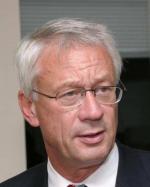
演讲题目: How Sparse Arrays can overcome Limitations in Dense Antenna Arrays
演讲者: Prof. Dr. Leo P. Ligthart, FIEEE, FIET, Acad. Russia, Multi-Dr.HC
时间 : 2019年 11月7号 (星期四)下午15:00
地 点: 南京市江宁区秣周东路9号,A3楼4层3412会议室
主办单位:yl23455永利官网 毫米波国家重点实验室
IEEE AP-MTT-EMC Joint Nanjing Chapter
江苏省电子学会天线与微波专委会
Abstract
In modern radio and radar the antenna arrays play an important multi-function role with respect to angular pattern and frequency characteristics. Most literature exists on so called ‘dense’ arrays with mutual, equidistant spacing between the antenna elements in the order of half the wavelength. In dense arrays mutual coupling between the elements and wide-angular scanning requirements give degradation in the dense array performance and cause many headache problems for generations of antenna engineers.
In so called ‘sparse’ arrays the mutual spacing is larger. For wide-angular scanning, individual transmit-receive modules are needed meaning that high gain dense antenna arrays with many elements are costly. Sparse arrays are interesting because they use ‘array thinning’ and have therefore a potential lower cost.
The lecture is divided into 2 parts
Part 1 concerns “Problems in Dense Arrays motivating the Need for Research on Sparse Arrays”
Attention is paid on the degradation phenomena in dense arrays with element spacing of half wavelength at the center frequency. The degradation will become significant in case wide-band and wide-angular scanning requirements have to be satisfied. The degradation may be so severe that in wide-band and wide-angular scanning applications the dense arrays should not be considered and that views on sparse arrays are essential. The lecture is given at graduate level and assumes that the attendees have knowledge on antenna array theory, systems and technologies.
Part 2 is focused on “Sparse Antenna Arrays: Challenging and Promising”
This lecture starts with a short summary of the ‘state-of-the-art’ in antenna array system. Next, various sparse array designs and characteristics are overviewed. Lowering the number of antenna elements mean that array efficiency relative to the full array size is reduced. In order to limit array efficiency reduction in sparse arrays, the transmit power per element should be equal with a threat of high side lobes near the main lobe and unwanted grating lobes. For avoiding grating lobes in sparse arrays the spacing between elements should be non-equidistant. The so- obtained spatial distribution of elements leads to a wanted spatial field distribution over the array. Special designs of this spatial field distribution can benefit the lowering of side lobes near the main lobe.
At the end of the lecture some sparse array applications get attention.
Biography:
CV Prof. dr. ir. Leo P. Ligthart
Leo Ligthart was born in Rotterdam, the Netherlands, on September 15, 1946. He received an Engineer's degree (cum laude) and a Doctor of Technology degree from Delft University of Technology. He is Fellow of IET and IEEE and Academician of the Russian Academy of Transport.
He received Honorary Doctorates at MSTUCA in Moscow, Tomsk State University and MTA Romania.
Since 1988, he held a chair on Microwave transmission, remote sensing, radar and positioning and navigation at Delft University of Technology. He supervised over 50 PhD’s. He founded the International Research Centre for Telecommunications and Radar (IRCTR) at Delft University.
He is founding member of the EuMA, chaired the first EuMW in 1998 and initiated the EuRAD conference in 2004 and BoG member of IEEE-AESS from 2013-2019
Currently he is emeritus professor of Delft University, guest professor at Universities in Indonesia and China, Chairman of CONASENSE.
His areas of specialization include antennas and propagation, radar and remote sensing, satellite, mobile and radio communications. He gives various courses on radar, remote sensing and antennas. His H-index is 37, he published over 700 papers, various book chapters and 8 books.

